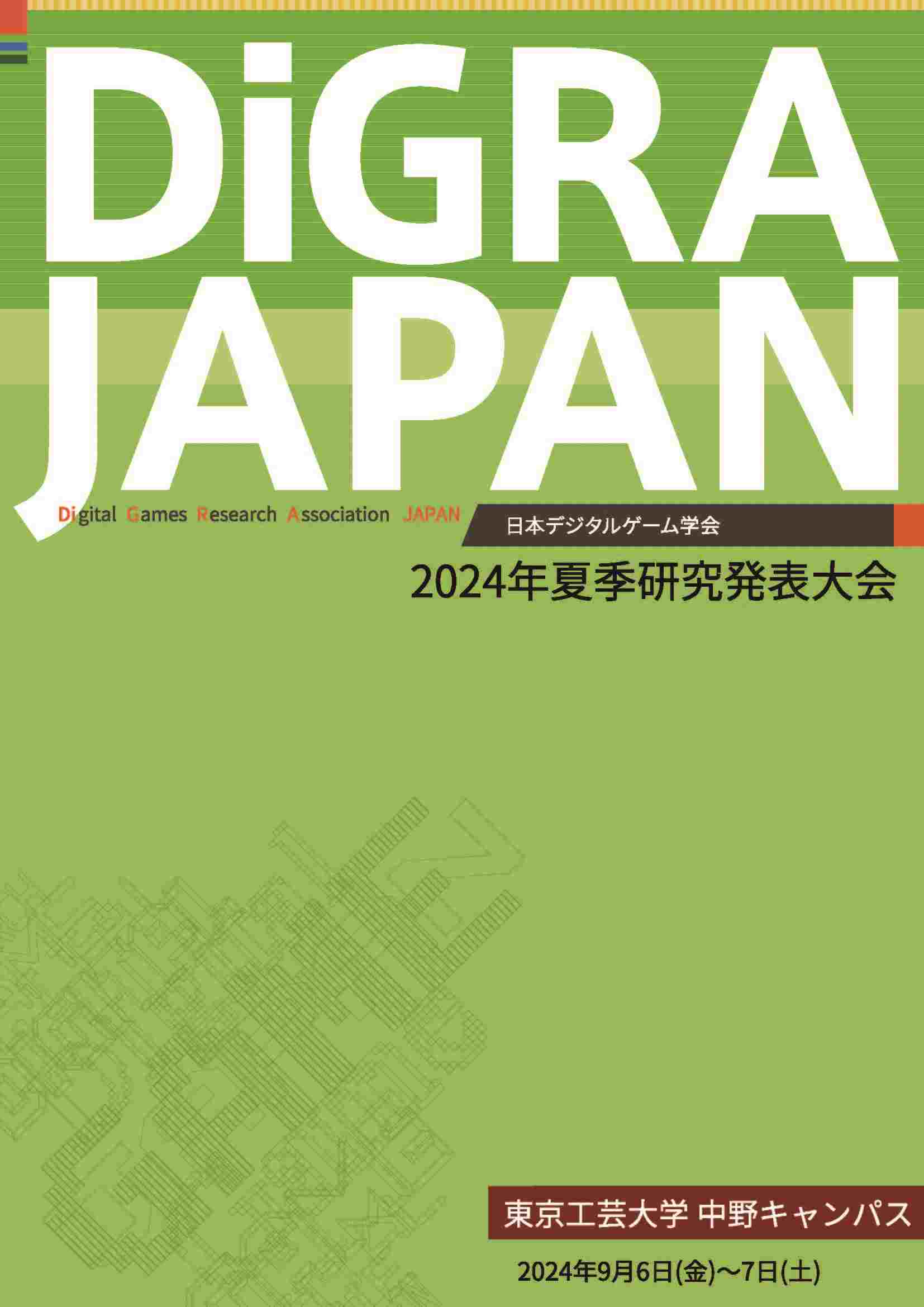2024 Summer Conference
Displaying 1-41 of 41 articles from this issue
- |<
- <
- 1
- >
- >|
Front matter
-
Pages 1-
Published: 2024
Released on J-STAGE: October 09, 2024
Download PDF (75K) -
Pages 2-4
Published: 2024
Released on J-STAGE: October 09, 2024
Download PDF (329K)
Keynote
-
Pages 6-
Published: 2024
Released on J-STAGE: October 09, 2024
Download PDF (158K)
-
Pages 8-13
Published: 2024
Released on J-STAGE: October 09, 2024
Download PDF (863K) -
Pages 14-18
Published: 2024
Released on J-STAGE: October 09, 2024
Download PDF (661K) -
Pages 19-24
Published: 2024
Released on J-STAGE: October 09, 2024
Download PDF (1212K) -
Pages 25-30
Published: 2024
Released on J-STAGE: October 09, 2024
Download PDF (801K)
-
Pages 31-36
Published: 2024
Released on J-STAGE: October 09, 2024
Download PDF (904K) -
Pages 37-42
Published: 2024
Released on J-STAGE: October 09, 2024
Download PDF (902K) -
Pages 43-46
Published: 2024
Released on J-STAGE: October 09, 2024
Download PDF (514K)
-
Pages 47-51
Published: 2024
Released on J-STAGE: October 09, 2024
Download PDF (593K) -
Pages 52-56
Published: 2024
Released on J-STAGE: October 09, 2024
Download PDF (697K) -
Pages 57-62
Published: 2024
Released on J-STAGE: October 09, 2024
Download PDF (556K) -
Pages 63-66
Published: 2024
Released on J-STAGE: October 09, 2024
Download PDF (555K)
-
Pages 67-68
Published: 2024
Released on J-STAGE: October 09, 2024
Download PDF (360K) -
Pages 69-71
Published: 2024
Released on J-STAGE: October 09, 2024
Download PDF (1416K) -
Pages 72-77
Published: 2024
Released on J-STAGE: October 09, 2024
Download PDF (1419K)
-
Pages 79-81
Published: 2024
Released on J-STAGE: October 09, 2024
Download PDF (947K) -
Pages 82-85
Published: 2024
Released on J-STAGE: October 09, 2024
Download PDF (403K) -
Pages 86-91
Published: 2024
Released on J-STAGE: October 09, 2024
Download PDF (511K)
-
Pages 92-95
Published: 2024
Released on J-STAGE: October 09, 2024
Download PDF (624K) -
Pages 96-101
Published: 2024
Released on J-STAGE: October 09, 2024
Download PDF (905K) -
Pages 102-106
Published: 2024
Released on J-STAGE: October 09, 2024
Download PDF (732K)
-
Pages 107-108
Published: 2024
Released on J-STAGE: October 09, 2024
Download PDF (602K) -
Pages 109-113
Published: 2024
Released on J-STAGE: October 09, 2024
Download PDF (896K) -
Pages 114-119
Published: 2024
Released on J-STAGE: October 09, 2024
Download PDF (1141K)
Interactive session
-
Pages 121-124
Published: 2024
Released on J-STAGE: October 09, 2024
Download PDF (515K) -
Pages 125-129
Published: 2024
Released on J-STAGE: October 09, 2024
Download PDF (735K) -
Pages 130-133
Published: 2024
Released on J-STAGE: October 09, 2024
Download PDF (855K) -
Pages 134-138
Published: 2024
Released on J-STAGE: October 09, 2024
Download PDF (708K) -
Pages 139-143
Published: 2024
Released on J-STAGE: October 09, 2024
Download PDF (548K) -
Pages 144-149
Published: 2024
Released on J-STAGE: October 09, 2024
Download PDF (981K) -
Pages 150-153
Published: 2024
Released on J-STAGE: October 09, 2024
Download PDF (661K) -
Pages 154-159
Published: 2024
Released on J-STAGE: October 09, 2024
Download PDF (608K) -
Pages 160-162
Published: 2024
Released on J-STAGE: October 09, 2024
Download PDF (683K) -
Pages 163-167
Published: 2024
Released on J-STAGE: October 09, 2024
Download PDF (871K) -
Pages 168-170
Published: 2024
Released on J-STAGE: October 09, 2024
Download PDF (224K) -
Pages 171-174
Published: 2024
Released on J-STAGE: October 09, 2024
Download PDF (511K) -
Pages 175-177
Published: 2024
Released on J-STAGE: October 09, 2024
Download PDF (579K)
Back matter
-
Pages 178-
Published: 2024
Released on J-STAGE: October 09, 2024
Download PDF (267K) -
Pages 179-
Published: 2024
Released on J-STAGE: October 09, 2024
Download PDF (160K)
- |<
- <
- 1
- >
- >|
